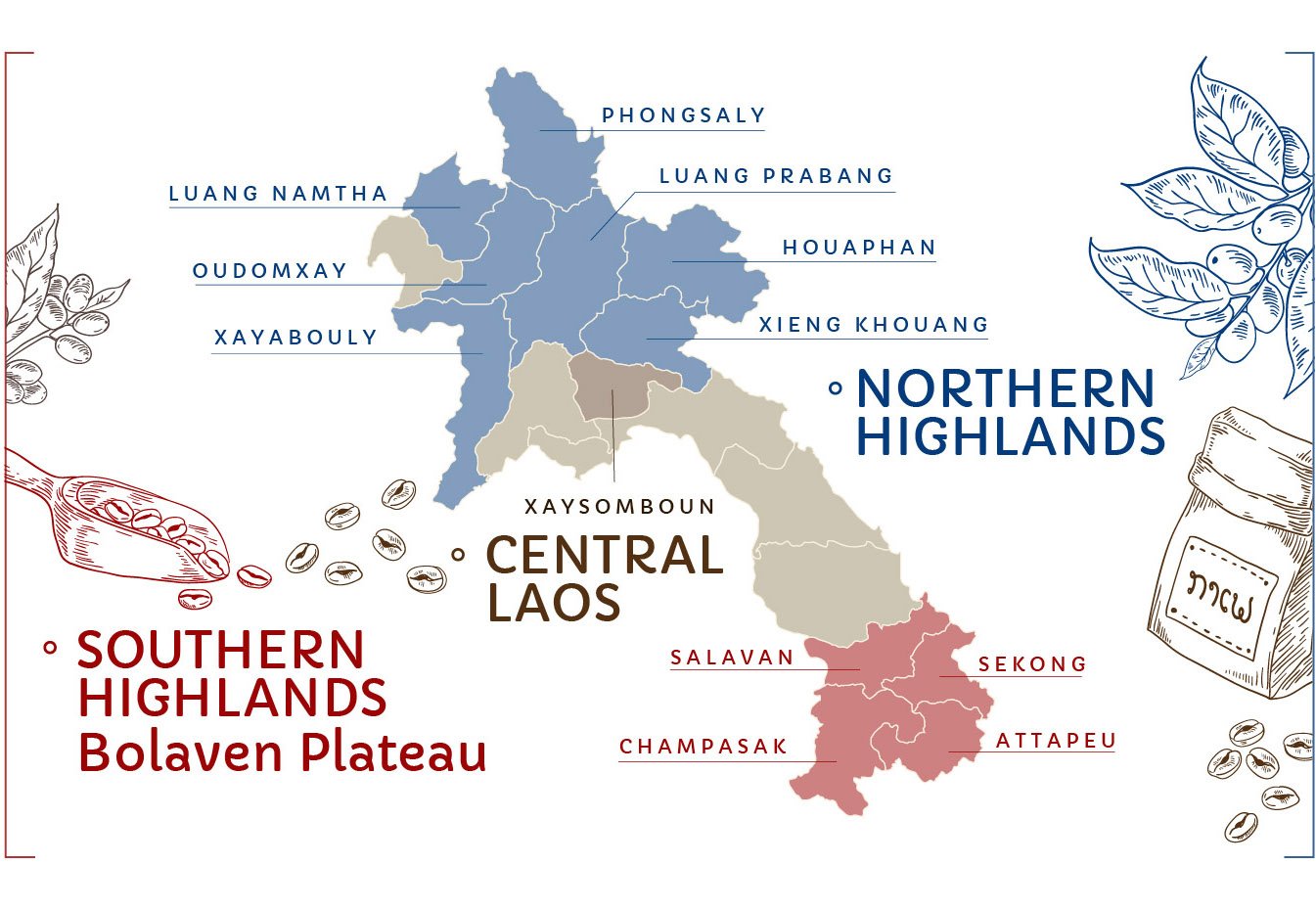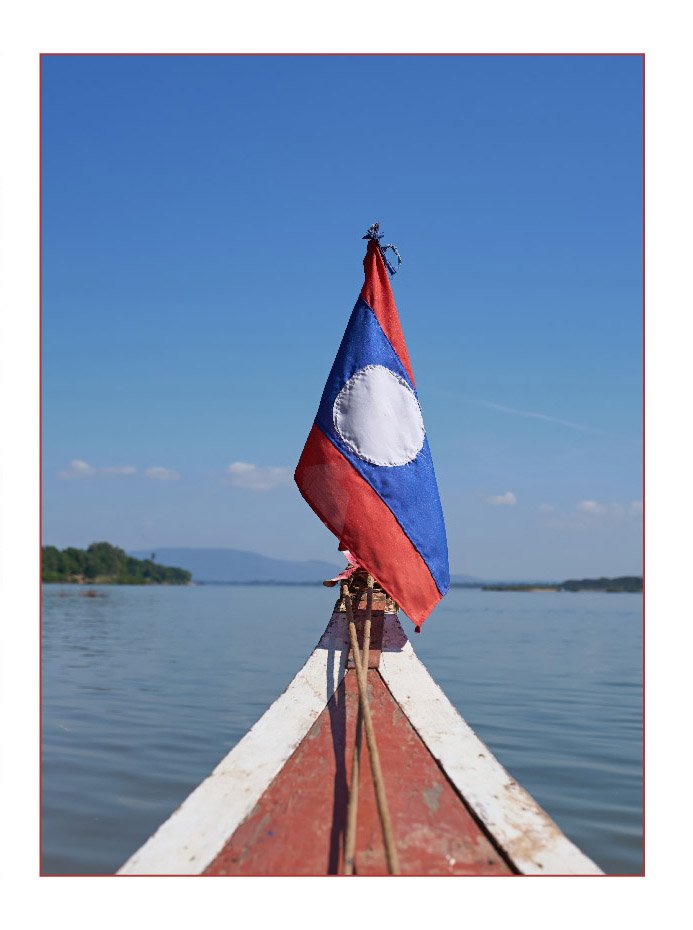Coffee in Xaysomboun Province
North of Vientiane and bordering Xiang Khouang, Xaysomboun is another potential region for cultivating Arabica coffee in Laos.
The province’s cool highlands and rugged terrain with elevations over 1200 m are optimal for growing Catimor Arabica, known for its distinctive flavours.
Its tropical climate has a rainy season from May–October and a dry season from November–April.
Rain aids plant growth, while the dry season is ideal for harvest and processing.
The region also a has breathtaking landscapes of peaks and valleys, including Phou Bia, the highest peak in Laos at 2,820 m, and Phou Mork, known for its panoramic “sea of clouds” views from Long Cheng Village.
Coffee cultivation presents a significant opportunity for the local Hmong and Khmu small-scale farmers. Many depend on subsistence farming, so the introduction of coffee offers a potential and sustainable increase in income.
By integrating coffee cultivation with traditional farming techniques, these farmers can utilise their extensive knowledge of the land to grow crops sustainably, marking a new era in agricultural advancement for Xaysomboun.
Mt Phou Hua Lon stands 1,857 m tall in Xaysomboun
Case Study – Xaysomboun Coffee Agriculture Development Ltd.
Mr Syvanh, an experienced agriculturalist, is the manager and owner of the Xaysomboun Coffee Agriculture Development Ltd. He received support from a French project in 2019 to start the company.
The company primarily uses washed processing, producing 1.5 tons of specialty Arabica coffee annually over the past four years.
In the 2021/2022 season, the company produced two tons of Catimor coffee for local markets and export to Korea. This was grown on 20 ha managed by six of their 22 farming households in Hom district. They aim to double production to cater to increasing local demand and favorable prices.
A woman and child walk through flowering coffee fields in Xaysomboun. Photo by Nicole Motteux.
The region is home to the Muong ethnic community which farm a total of 40 ha. In addition to coffee, they grow bananas and Aquilaria crassna, a critically endangered tree used in perfume and incense.
Temperatures average a cool 20°C, supporting agroforestry, and protecting endangered butterflies and vital water resources.





